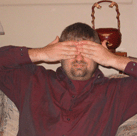Voting closes Friday at noon.
Student #1 has left a new comment on your post "Inside The Video Game Industry's Culture Of Crunch...":
I know people say this sounds familiar and are referring to theater. But, as far as I know, in most theaters crunch time is just tech week and no one moves a shows opening up. That is one thing that I never like, when management thinks they are making a good decision because it'll make more money and that their employees will be fine. If the video game industry had crunch time just a week or two before manufacturing, then I wouldn't say anything as long as the devs knew what they were getting into. But planning and thinking its ok to do with your employees all them time, just no. That is what causes burn out. People need to rest and relax. They need a life. They are not mindless machines. Like Sarah said, this is about budgeting. Plan time accordingly. That means when the devs tell the execs their timeline, that is their timeline. They aren't just goofing off and taking extra time!Student #2 has left a new comment on your post "Fears of the Artist Sustain a Dysfunctional System...":
This was an interesting article to read in tandem with the one about the Minnesota Dance Theater's board. It seems there's a growing discontent with both sides of the NFP art world. I agree wholeheartedly with the sentiment that theater artists need to stop feeling beholden to producers and artistic directors, but, given that the author also wants to empower the artist class by changing the way poverty is glamorized if you're an artist, I wonder if he has any thoughts on how that can be achieved. There isn't room in the arts world for every artist to be self-producing all of their own work. Indeed, that would have a lot of one-person shows, which I feel would end up limiting the power of artists even more. Perhaps there's a way to create some kind of confederation or co-op of producing artists. That introduces a whole other host of managerial issues, but there must be a way for disenfranchised artists to organize in some meaningful way. I look forward to seeing how this conversation continues.Student #3 has left a new comment on your post "RE/P Files:The Coming Of Age For The Once-Maverick...":
I think that this article is incredibly awesome. For me the idea of how the audio business has changed since the 80s. I think the years of the Grateful Dead Wall of Sound are totally insane. I always say that I think I was born in the wrong decade, the only way I'll ever experience the sound of these systems and their beauty is through crappy youtube videos and DVDs. That makes me sad. BUT there will be a day where I have the opportunity to design a super awesome rock show designed to sound like an 80s concert and I can guarantee that I will use some of the vintage equipment as long as I can get my hands on it, its a long shot but a man can pray you know.Student #4 has left a new comment on your post "How LED Streetlights Will Change Cinema (And Make ...":
I am pleased to find Geoff Manaugh hits on a few interesting points in his article, from both pro and con sides of Los Angeles switching from high-pressure sodium streetlights to blue-tinted LEDs. I would argue the switch to blue-tinted LEDs would not necessarily make cities look better, but simply different. At least not Los Angeles, or more correctly, my memories of the many years I spent in Los Angeles, a number of those years living downtown close to where the comparison photos were taken. Based on the photo comps in the article, the sodium lights pick up more of the general haze of the city, while the LEDs give a crisp and clear look. Now, hard to say for sure, as the photos were obviously not taken at the same time, and there could have been more smog and/or cloud cover in the sodium light photo. But let us assume they were taken at the same time and compare as such. I quite like the sodium blur, unlike any city I have yet to experience. The LED look is antiseptic. Of course this is merely my opinion, admittedly based on romantic nostalgia. And truth be told, I would have to vote for the LEDs, as they are more environmentally friendly. However, why can they not be tinted yellow??? I love Manaugh’s ponder that city lighting schemes could be subject to historic preservation laws. He also brings up an interesting point with blue leading to disrupted circadian rhythms. This all makes me wonder if I would have fallen in love with Los Angeles if the city had been blue when we first met.Student #5 has left a new comment on your post "What Makes an Artist Qualified to Tell a Story?":
I am actually impressed by this article because it has changed my views and understanding of a qualified artistic perspective. Growing up, I have heard many times that white people are just unable to understand the suffering of black people. And if I presented this article to many of my family members, they would still sneer.
The way that the article presents perspective is really interesting because I would assume that I a person would need to go through a historical experience or at least have some contact with it. But, they way that she presents it shows that someone can relate even if that haven't and has the right to create what they have experienced like any other person who has experienced it first hand.


No comments:
Post a Comment